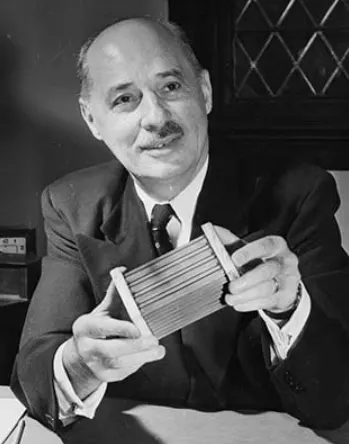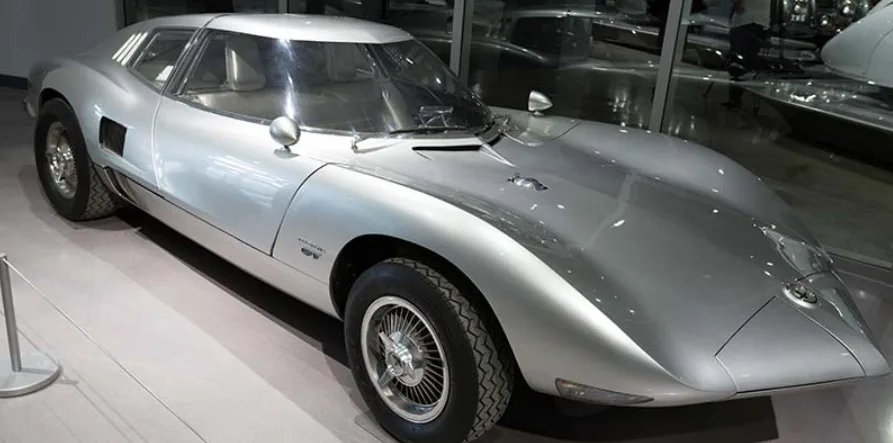
Transportation
6 minute read
7 major breakthroughs in the evolution of sustainable transport
The history of sustainable road transport is full of understated innovations and brave thinkers whose names we have forgotten. Here, we chart the historical breakthroughs that have paved the way for the zero-emissions road transport of the future.
1. 19th century electric cars
“The history of the car is very easy to write as the history of inevitable technological progress,” says Colin Divall, a transport historian at the University of York. But it’s not that simple:
Wind the clock back 120 years, and steam, electric and internal combustion were on a level pegging to become the motive force of the automobile, says Divall. “It was by no means inevitable that the petrol car would become as powerful as it did.”
In the early 1900s, for example Porsche and Ford produced electric cars. Before the First World War, London had electric buses, and the first electric tram was built in the Lichterfelde suburb of Berlin already in 1881. However, by 1935, EVs disappeared because of the same reasons that hinder their use today: poorer range and higher costs than vehicles with internal combustion engines.

2. Reintroducing unleaded gasoline
The switch to unleaded petrol even attributed to a big decrease in crime rates
Sometimes, it’s not technological development that’s needed to become more sustainable – but recovering faith in tried and tested solutions.
1950s America was a place for muscle cars and gas-guzzling monstrosities. The need to power these super-high performance vehicles wasn’t sufficient for gasoline alone: lead began to be added to improve engine performance.
The idea had existed since the early 20th century, when car manufacturers claimed it was safe.
It turned out not to be. Lead can be toxic to human organs, yet by the 1970s the United States consumed 200,000 tonnes of it through petrol use. Legislation tamped down its use, promoting unleaded petrol instead, and in the United States it was banned outright by 1996. Lives were saved – as were living standards. Furthermore, crime was reduced: 56 percent of reductions in crime rates was attributed scientifically to the switch to unleaded petrol, with academics claiming that the lead had an impact on people’s cognitive abilities.
In the whole of EU, selling leaded gasoline was banned as late as 2000 – seven years after the USA. Finland was a forerunner, with Neste being the country’s first fuel provider to start selling unleaded gasoline already in 1989.

Unleaded gasoline also enabled wide-spread use of the catalytic convertor, as lead destroys the catalyst.
3. The catalytic converter
Necessity is the mother of invention – and the catalytic converter, which forces a chemical reaction in a vehicle’s exhaust to reduce toxic gases and pollutants, is the perfect example. “It was basically invented and introduced on a large scale in California because they had a particular problem with smog and street-level pollution,” says Divall.
Necessity is the mother of invention – and the catalytic converter is the perfect example
Eugene Houdry, a French mechanical engineer whose eyes grew wide at the sight of the scale of smog produced from cars snaking along Los Angeles streets, received a patent for the converter in 1952. Within two decades it was in use in millions of cars, and still is today.

4. Renewable diesel
With only a decade left to limit climate change, renewable diesel has become an essential solution
In the 2010s, humankind reached the era of advanced biofuels: we learned how to create low-emissions fuels from renewable feedstock that does not supplant, but instead works alongside, food production. With only a decade left to limit irreversible damage from climate change, renewable diesel has become an essential solution to decarbonize road transport: for example, Neste MY Renewable Diesel decreases greenhouse gas emissions for up to 90 percent over the fuel’s lifecycle.
As the world’s largest producer of renewable diesel and sustainable aviation fuel refined from waste and residues, key to Neste’s success is its NEXBTL technology, through which dirty and hard-to-process raw materials can be transformed into pure hydrocarbons to be used as drop-in solutions compatible with existing engine technology. First developed in the 1990s, NEXBTL was put into process in the early 2000s and now dominates the industry. One of its inventors is Ulla Kiiski, an engineer born into a farming community in eastern Finland in 1960. “My work has taught me that you have to be determined, persistent and to never lose your faith,” she says.

Ulla Kiiski is one of the inventors of the NEXBTL technology used in producing renewable diesel.
5. The turbo charger
Without the turbo charger – a device fitted into an internal combustion engine to increase its efficiency by forcing extra air into the combustion chamber – our cars would be very different from what they are today: We would not have the kinds of powerful trucks and diesel passenger cars that our transport system relies on, and even designs would be different, as engines would be massive in size.
While the turbo charger is almost as old as internal combustion engines themselves, it took decades of development before we started using it in cars.
Turbocharging was first patented in 1905 by the Swiss engineer Alfred Büchi, who used the technology in a marine engine, but both Gottlieb Daimler and Rudolf Diesel researched using it in airplanes already in the late 19th century. However, it wasn’t until the 1970s that the devices became small enough for wide-spread use in passenger cars. The automotive industry hasn’t looked back ever since.

Chevrolet’s Corvair Monza Spyde, introduced in 1962, was one of the first turbocharged passenger cars.
6. The cycle lane
The world’s first cycle path was laid alongside the Maliebaan, a main street dissecting Utrecht, in 1885. It allowed people to safely travel alongside the rising number of motor cars, and since then cycling has boomed. The use of bikes in major cities worldwide has tripled or quadrupled between 1990 and 2015.

7. Power-to-X
While not quite there yet, one innovation scientists already view as a potential breakthrough in sustainable transport is Power-to-X. It’s a technology that helps tackle one of the key issues those 1900s’ fleets of electric vehicles faced: how to store renewable energy.
Power-to-X could change the future of sustainable transport forevermore
For Neste, the company’s Power-to-X scheme harnesses the power of electrolysis, powered by renewable energy, to convert CO2 into zero-emissions fuels to be used in vehicles with internal combustion engines. Neste is also exploring how to turn carbon dioxide into chemicals and other materials. With almost unthinkable potential, Power-to-X is an energy source of the future, and something that could materially change the future of sustainable transport forevermore.

Power-to-X is expected to solve the storage problem of renewable energy.
Credits: Chris Stokel-Walker is an author, speaker and journalist whose work has appeared in BBC News, The New York Times and WIRED UK.





